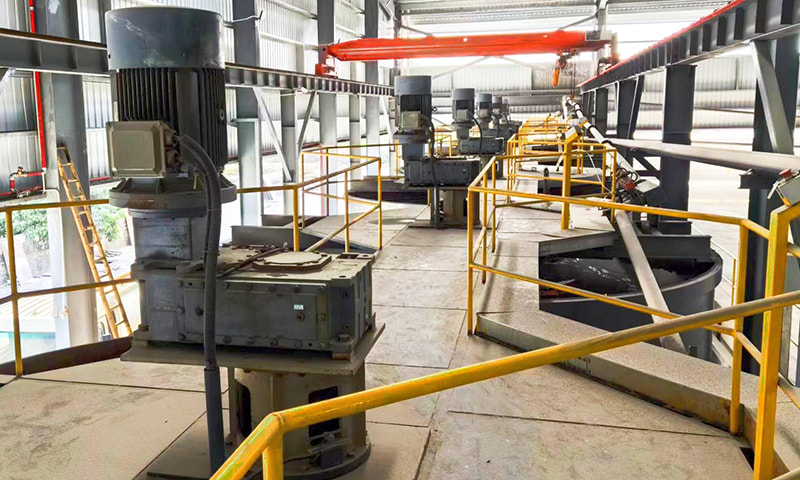In the evolving construction materials industry, the AAC block production line is gaining attention for its efficiency and contribution to sustainable building. Among its various technical features, automation has become the focal point, reshaping not only production efficiency but also the overall positioning of AAC block production line manufacturers in the global market.
Rising Role of Automation in AAC Production
Traditionally, AAC block manufacturing involved multiple manual steps, from slurry preparation to autoclaving. Automation now integrates these processes into a seamless workflow, minimizing human intervention and ensuring consistent product quality. The shift is not just about faster output; it is about creating a production ecosystem where energy, labor, and raw materials are utilized with higher precision.
Automation is increasingly seen as the standard for AAC block plant configurations, particularly in markets demanding lightweight concrete materials for modern infrastructure. The ability to integrate control systems, real-time monitoring, and data-driven adjustments is redefining how AAC block making machines are evaluated and purchased.
Efficiency and Quality Control
One of the significant advantages of automation in AAC block production line is the improvement of quality consistency. Manual handling often led to variations in block density, curing, and dimensions. With automated systems, parameters such as temperature, pressure, and raw material ratios can be monitored and adjusted continuously. This ensures uniform lightweight concrete blocks that meet the rising expectations of sustainable construction.
Key Quality Improvements with Automated AAC Block Production Line
| Production Aspect | Manual Operation Challenges | Automated Line Benefits |
|---|---|---|
| Raw Material Mixing | Inconsistent proportions | Precise ratio control with sensors |
| Cutting Process | Uneven block sizes | High-accuracy automated cutting |
| Autoclaving | Temperature fluctuations | Stable pressure and heat regulation |
| Final Product Quality | Variable density and strength | Consistent lightweight concrete output |
Energy and Resource Optimization
Automation also plays a vital role in resource management. AAC block production line manufacturers are focusing on designs that reduce energy consumption during autoclaving and minimize material waste during cutting. This not only reduces operational costs but also supports global initiatives for eco-friendly construction.
The integration of semi automatic and fully automatic AAC block plant options provides flexibility to investors. While semi automatic AAC block making plants balance cost and control, fully automatic systems are increasingly preferred for large-scale capacity requirements, such as plants producing over 150000m³ per year.
Market Demand for Automated AAC Plants
Market interest is shifting toward fully automated AAC block production lines due to their capacity to deliver high output with minimal workforce. Buyers are increasingly searching for AAC block plant setup cost details, AAC block machine price, and turnkey AAC block production equipment, with automation often positioned as a decisive factor in procurement.
Automation also aligns with the growing demand for green building solutions. AAC block manufacturing lines that incorporate automated systems are often highlighted in industry discussions on energy efficient AAC block production line and sustainable construction practices.
Investment Considerations
For stakeholders evaluating how to start AAC block manufacturing plant, automation influences several critical factors:
Capital cost vs. operational savings: While a fully automatic AAC block machine involves higher upfront investment, long-term labor and material savings offset the initial cost.
Scalability: Automated AAC block production lines can be expanded to meet increasing demand without major changes to core processes.
Market positioning: Adopting automation helps manufacturers align with international standards, increasing competitiveness in global markets.
Comparison of Semi Automatic vs. Fully Automatic AAC Block Production Line
| Feature | Semi Automatic AAC Plant | Fully Automatic AAC Plant |
|---|---|---|
| Initial Investment | Moderate | High |
| Labor Requirement | Higher | Minimal |
| Production Capacity | Medium | Large-scale (150000m³/year or more) |
| Consistency of Quality | Moderate | High |
| Energy Utilization | Standard | Optimized with advanced controls |
The Future of AAC Block Machinery
AAC block production line manufacturers are expected to push automation even further, incorporating artificial intelligence and predictive maintenance systems. The evolution will not just address cost and quality but also anticipate performance issues before they occur, enabling uninterrupted production cycles.
Another expected trend is modular AAC block production plant designs, allowing companies to add or remove automated modules according to capacity requirements. This modular approach would make AAC block manufacturing line investments more flexible, especially for emerging markets balancing infrastructure growth and budgetary constraints.
Automation is no longer a luxury feature in AAC block production line—it is becoming the industry benchmark. From precise material handling to energy optimization, automation enhances the value of AAC block making machine technology and positions AAC block production line manufacturers at the center of modern construction innovation.






